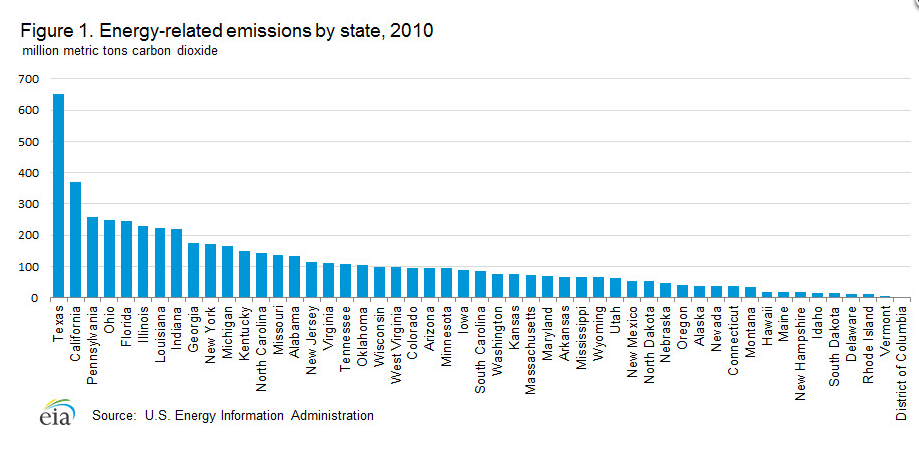May 16
2013
New York’s energy-related CO2 emissions lowest per capita

Whether levels of carbon dioxide did or did not reach the grim milestone of 400 parts per million at a Hawaiian observatory this month doesn’t take away from the fact that we are still very dependent on fossil fuels.
Rising above the mark is inevitable.
A host of scientific studies show there could be catastrophic results if global temperatures reach what has been called the “danger zone,” a 2 degrees Celsius (3.6 degrees Fahrenheit) increase above pre-industrial global temperatures. Scientists believe the 400 parts per million level is the limit before global temperatures rise above that danger zone.
This is important because global warming at this level could result in more extreme weather such as super storms, and other threats to life as we know it. For example, Reuters reported May 12 that animal and plant habitats will be under significant threat if governments don’t take swift action to curb greenhouse gas emissions.
With that said, the U.S. Energy Information Administration released a report Monday that ranked states energy-related CO2 emissions.
From 2000 to 2010, carbon dioxide emissions decreased in 32 states and increased in 18 states, according to the report. New York’s CO2 emissions dropped 18 percent over this period.
Of all states, New York has the least amount of CO2 emissions per capita: 8.8 metric tons per person. That’s a 21 percent drop since 2000.
Why so low for New York?
One major reason is the mass transit service in New York City. But there are other reasons, too.
“Many factors contribute to the amount of emissions per capita, including: climate, the structure of the state economy, population density, energy sources, building standards and explicit state policies to reduce emissions,” the report states.
Despite this, the reliance on fossil fuels is still apparent in New York and everywhere else.
Most of New York’s energy-related CO2 emissions comes from petroleum—a total of 92.2 million metric tons or 53 percent. Only Texas, California, Florida and Louisiana are higher.
Transportation is the largest sector for energy-related CO2 emissions, accounting for 40 percent of the total of 172.8 million metric tons.
Can New York’s energy infrastructure be fossil fuel free?
Stanford University did a study on this very issue.
The conclusion? Yes, New York can be fossil fuel free as early as 2030 by using wind, sunlight and water.
Doing so would also provide some other benefits:
- 4,000 less deaths annually from air pollution, saving $33 billion a year.
- 37 percent less power demand.
- 4.5 million temporary jobs created to build the infrastructure and 58,000 permanent jobs each year
- Energy prices will be more stable because they won’t rely on fluctuating fuel costs.
“This plan may serve as a template for plans in other states and countries. Results here suggest that the implementation of plans such as this in countries worldwide should reduce global warming, air, soil, and water pollution, and energy insecurity,” the study said.

